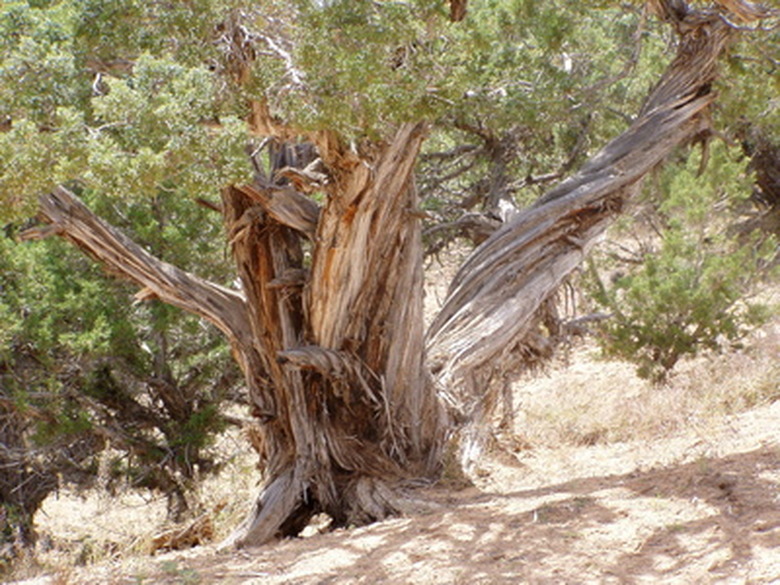How To Transplant A Weeping Blue Atlas Cedar
Things Needed
- Spade or shovel
- Appropriate transportation for the tree
- Burlap
- Water
- Mulch
The ease or difficulty in transplanting a weeping blue atlas cedar is in direct proportion to the age of the tree. A young tree, without a well-established root system, is much easier to transplant than a fully mature tree. In fact, it is not recommended that an individual undertake transplanting a full-sized weeping blue atlas cedar due to the fact that it is virtually impossible to lift the tree from its current position or to transport it to its new home. For a full-sized cedar it is recommended that a professional with a mechanical tree transplanter be hired. Trees should be transplanted while dormant, in early spring, as soon as the ground is soft enough to dig but before the tree has begun to bud out. The weeping blue atlas cedar grows best in hardiness zones 6 through 9.
Step 1
Choose a young weeping blue atlas cedar to transplant.
- The ease or difficulty in transplanting a weeping blue atlas cedar is in direct proportion to the age of the tree.
Step 2
Prepare a location for your tree. Your blue atlas cedar likes full to partial sun and well-drained soil. Dig a hole 4 feet deep and at least 10 feet in diameter.
Step 3
Dig up the young tree to be transplanted. Dig down 4 feet starting 4 feet out from the trunk. This will create a root ball 8 feet in diameter and 4 feet deep. As you get close to digging out the root ball, rock the tree back and forth to loosen its roots until you can finally tip the tree loose, breaking as few roots as possible. Leave the dirt on the roots.
- Prepare a location for your tree.
- Dig down 4 feet starting 4 feet out from the trunk.
Step 4
Lift the tree onto your transportation.This may require several people. Immediately wrap the roots in burlap and wet the burlap well. You do not want the roots to dry out.
Step 5
Transport the tree to its new location and wet the roots well. Set the tree in its new hole and carefully cover the roots with soil. Plant the tree no deeper than it was originally growing, or even 1 inch less.
Step 6
Water very well, but do not let water puddle around the tree. If soil settles during watering, add a little more but do not pack soil around the trunk any higher than the tree was originally growing. Place 2 inches of organic mulch around the tree but do not fertilize. Keep the ground damp but not soggy for the remainder of the growing season. Reduce watering in winter and water well once per month the following summer.
- Lift the tree onto your transportation.
- If soil settles during watering, add a little more but do not pack soil around the trunk any higher than the tree was originally growing.
Tip
If transplanting a tree that will be awkward for one person to lift or to move, enlist help. Keep the roots wet at all times and cut as few roots as possible.
